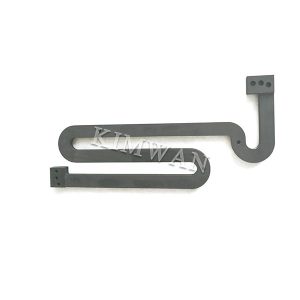
Graphite Parts for Photovoltaic and Semiconductor
Graphite Parts for Photovoltaic and Semiconductor industries play a vital role in advancing the production of high-performance components used in solar energy and electronic applications. These industries rely heavily on the unique properties of graphite, including its high thermal conductivity, resistance to high temperatures, and excellent mechanical strength. Graphite Parts for Photovoltaic and Semiconductor applications are used in various stages of production, such as the fabrication of solar cells, semiconductor wafers, and other essential components. With the increasing demand for renewable energy solutions and more advanced electronic devices, the need for high-quality graphite components in these industries has never been greater.
One of the key benefits of Graphite Parts for Photovoltaic and Semiconductor applications is graphite’s superior ability to withstand extreme temperatures. In the semiconductor industry, materials must endure high processing temperatures, such as during the growth of silicon crystals or the manufacturing of semiconductor wafers. Graphite’s exceptional thermal conductivity allows for efficient heat dissipation, preventing thermal damage to components and ensuring uniform processing. Similarly, in the photovoltaic industry, graphite parts are used in the production of high-efficiency solar cells, where managing the heat generated during fabrication is crucial to maintaining performance. The ability of Graphite Parts for Photovoltaic and Semiconductor applications to maintain structural integrity under heat makes them indispensable for both of these industries.
Another advantage of using Graphite Parts for Photovoltaic and Semiconductor applications is their excellent resistance to chemical corrosion. Both semiconductor and photovoltaic manufacturing processes often involve exposure to reactive chemicals, gases, and harsh environments. Graphite’s inherent resistance to oxidation and chemical attack ensures that it can withstand these conditions, maintaining its performance and durability over extended use. In particular, Graphite Parts for Photovoltaic and Semiconductor applications are used in reactors, chambers, and other equipment where material degradation could compromise the quality of the final product. By ensuring that graphite parts remain stable even in corrosive environments, manufacturers can reduce maintenance costs and enhance the overall reliability of their production processes.
In addition to their heat and corrosion resistance, Graphite Parts for Photovoltaic and Semiconductor applications also offer excellent mechanical properties, such as low friction and wear resistance. These properties make graphite a crucial material in the fabrication of components like molds, dies, and heat shields, which are essential in shaping and processing delicate semiconductor wafers or photovoltaic cells. The low friction nature of graphite helps reduce wear on equipment, ensuring smoother production cycles and improving the efficiency of manufacturing processes.
In conclusion, Graphite Parts for Photovoltaic and Semiconductor applications are essential for achieving high efficiency, reliability, and quality in the production of solar and semiconductor components. Their superior thermal conductivity, resistance to chemical corrosion, and excellent mechanical properties make them invaluable for industries that require precision and durability under demanding conditions. As both the photovoltaic and semiconductor sectors continue to evolve, the role of Graphite Parts for Photovoltaic and Semiconductor applications will remain crucial to meeting the growing demand for advanced technologies in renewable energy and electronics.






